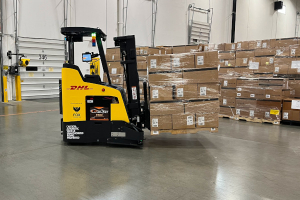Distribution Center Receiving Best Practices
In today's world of increasing customer expectations and delivery requirements, a distribution center’s overall velocity can impact how well they survive in their local markets.
Derek Browning of LeanCor and Kevin Ledversis of Newcastle Systems, Inc. offer some insight into how DCs can use lean principles and mobile power to increase velocity, improve processes and reduce labor costs in your receiving process.
Customers Demand Order-to-Ship Lead Times in Terms of Hours
Velocity, a buzz-word in today’s supply-chain world, means many things to many people. To some, it means increased cost and negative P&L performance to meet customer demand and respond to the “Amazon Effect”.
To others, it’s a thoughtful intentionality to move only what needs to be moved, when it needs to be moved, but to move it more frequently in smaller batches. In the world of distribution, smaller batches almost immediately equates to higher costs, as pick waves are sub-optimized, unless we think about our distribution strategies altogether differently.
Velocity in a Distribution
The problem we have today is that the market is now forcing it upon us, whether we are ready or not. High velocity facilities are forced to look at the waste embedded in long walk paths to and from printers or to and from fast-moving product.
They are also forced to examine the role of automation in core areas of their business, and synchronize the work in each of the areas so that it flows smoothly from shift start to shift end. So, let’s think differently about the concept and lean into it rather than running from it. This means we need to be more aggressive with our process improvements and labor utilization.
What’s Related




Favorites





